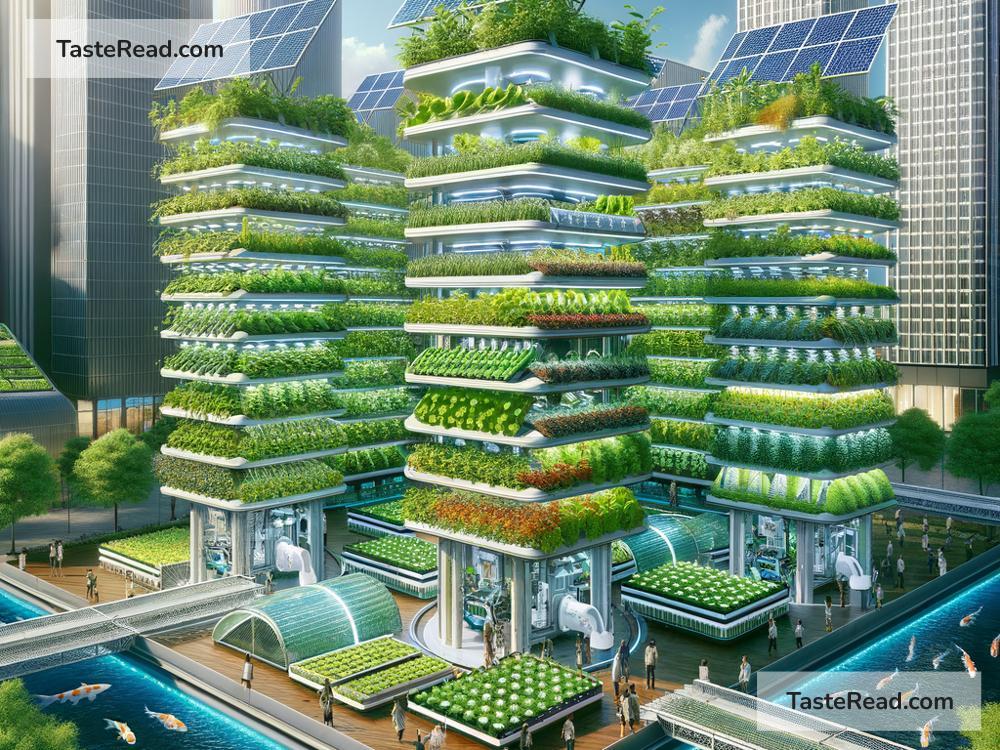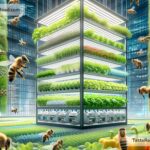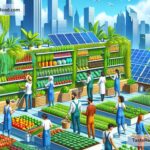The Future of Food: How Circular Systems Could Change Everything
Food is one of the most important parts of our daily lives. It sustains us, brings us together, and shapes cultures all over the world. But the way we grow, process, and consume food today has major challenges. From wasting food to using up resources like water and farmland, the current system is not sustainable over the long term.
Thankfully, there’s hope. Scientists, farmers, and innovators are working toward a new approach to food—one that is better for both people and the planet. This future is connected to something called “circular systems.” Let’s explore why circular systems are such a big deal and how they can impact the future of food.
What Are Circular Systems?
To understand circular systems, let’s first look at how things work now. Currently, most industries follow what’s known as a “linear model.” In this model, we take resources from nature (like soil, water, animals, and plants), use them to make products (like food), and then throw away the waste. This creates a “take-make-dispose” cycle. Unfortunately, this way of doing things uses up a lot of resources and produces harmful waste, like plastic packaging and greenhouse gases.
Circular systems are different. Instead of throwing things away, the goal is to reuse resources and create a loop or “circle” where nothing is wasted. In a circular food system, every part of the process—growing crops, packaging food, consuming meals, and handling leftovers—works together efficiently, reducing waste and protecting natural resources.
Why Do We Need Circular Food Systems?
The world’s population is growing, which means there will be more mouths to feed in the future. By 2050, experts estimate we will need to produce 70% more food than we do today. At the same time, we’re facing serious problems like climate change, water shortages, soil depletion, and pollution. If we continue relying on the current linear food system, we may struggle to feed everyone without damaging the planet further.
Circular food systems could offer a solution. By reducing waste and using resources wisely, these systems can help us grow more food while protecting the environment. They can also create stronger economies, healthier communities, and fairer opportunities for everyone involved in the food chain—from farmers to consumers.
What Might the Future of Food Look Like?
Here’s how circular systems could change different parts of the food industry:
1. Farming Smarter
Imagine farms that make the most of every drop of water, every seed, and every patch of land. In the future, circular farms could use advanced technology, such as sensors and robots, to monitor crops, control pests naturally, and reduce waste. Farmers might grow food together with fish or livestock in systems that recycle nutrients—for example, fish can provide fertilizer for plants, and plants can help clean water for fish.
Vertical farming, where crops are grown indoors in stacked layers, could also play a big role. These farms use less land and water and can be set up in cities, closer to where people live.
2. Reducing Food Waste
Right now, about one-third of all food produced worldwide is wasted. That’s a huge problem! Circular systems would aim to eliminate food waste completely. Food that can’t be eaten or sold might be turned into compost to enrich soil, or used to make energy through special processes like biogas production.
On top of that, better packaging and storage methods could help keep food fresh longer. For example, scientists are already working on edible or biodegradable packaging materials that don’t harm the environment.
3. New Ways to Eat
The future of food might include exciting new ways to get our nutrients. For instance, more people could start eating plant-based or lab-grown meats, which are better for the environment than traditional livestock farming. Sustainable proteins, like algae or insects, might also become more common. These foods could provide nutrition while using fewer resources.
4. Local and Connected Communities
Circular systems encourage communities to grow food locally and share resources. Urban areas might turn rooftops or empty lots into gardens. Food-sharing apps and local co-ops could make it easier for people to trade ingredients or donate unused food.
By producing food closer to home, we can cut down on transportation costs and emissions, while also strengthening connections between neighbors.
Challenges of Circular Systems
Although circular food systems sound amazing, making them a reality won’t be easy. It will take cooperation between governments, businesses, researchers, and citizens to redesign the way we produce and consume food. Farmers will need support to adopt new methods, and consumers will need to change habits, like wasting less food and embracing more sustainable diets.
Investment in new technologies and education will also be key to moving forward. While the ideas behind circular systems are simple, putting them into practice on a global scale will be complex.
A Brighter Future for Food
Changing the way we grow, eat, and think about food is no small task. But with circular systems, there’s a real opportunity to build a healthier and more sustainable future—for people, the planet, and generations to come. By reusing resources, reducing waste, and working together, we can ensure that everyone has access to nutritious food without harming the environment.
The future of food is not just about what’s on our plates; it’s about creating systems that support life in a balanced way. Circular systems represent a hopeful path forward, and it’s up to all of us to take steps toward this better, greener world. So the next time you enjoy a meal, remember: food can be more than just something we eat—it can be a part of something bigger.


